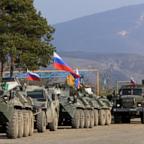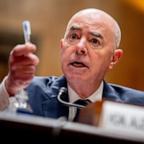How to Save America's Infrastructure: Lessons From Puerto Rico
Public-private partnerships provide a cure for infrastructure woes.
June 5, 2013 -- As Congress and the Obama administration try to address the budget deficit, the need to invest in our basic infrastructure becomes more evident every day.
Many of our roads, bridges, schools, airports and ports are in bad shape and need to be repaired or rebuilt in order to compete in the global economy. The recent bridge failure in Washington State is only the latest in a series of dramatic warning signs. The American Society of Civil Engineers gave a "D" grade to our transit infrastructure and estimates that we must invest $2 trillion over the next five years to bring our infrastructure to an acceptable level. That is $1.4 trillion more than we spent in the last five years.
In spite of these needs, federal, state and local governments will continue to face severe fiscal constraints. The federal deficit this year will total more than $1 trillion. As limited budgets become a fact of life that is here to stay, Congress must scramble to find ways to finance our basic infrastructural needs.
For example, the Transportation Bill expires next year. Instead of increasing our gas tax, Congress ought to look for creative ways to provide the necessary funding to achieve state-of-the-art roads and highways. Given our fiscal realities, it should be clear to the Obama administration, Congress, and state officials that infrastructure projects can no longer be funded by raising taxes or traditional bond offerings. We must tap into available private capital, as other nations regularly do.
Puerto Rico faced this infrastructure crisis during my tenure as governor. The solution we implemented, with considerable success, involved investing in infrastructure by means of public-private partnerships -- "P3" projects.
In a P3 project, the government contracts with a private company to renovate, construct, maintain, and/or manage an infrastructure resource. These partnerships inject private capital into a public project. The project's users normally pay an assessment or toll. Both the public and private parties share the risks and profit, thus providing the necessary public infrastructure without imposing an additional tax on citizens that do not benefit directly from the infrastructure improvement.
In our case, as is the case of many other states and major cities, we needed to upgrade our main airport, schools and expressways. The renovations were long overdue, but the state's public finances precluded full government funding. Thus, we focused on working with the private sector.
The resulting P3 consortia funded the necessary repairs and allowed us to build world-class facilities.
In the case of the expressways, it provided improved roads, lighting and safety, as well as new police vehicles and road assistance. In the case of the airport, it is funding major renovations that were long overdue, as well as expanding service.
In both cases, the partnerships also generated funds that allowed the state to pay down its debt to bondholders.




